PRI: The Next Generation
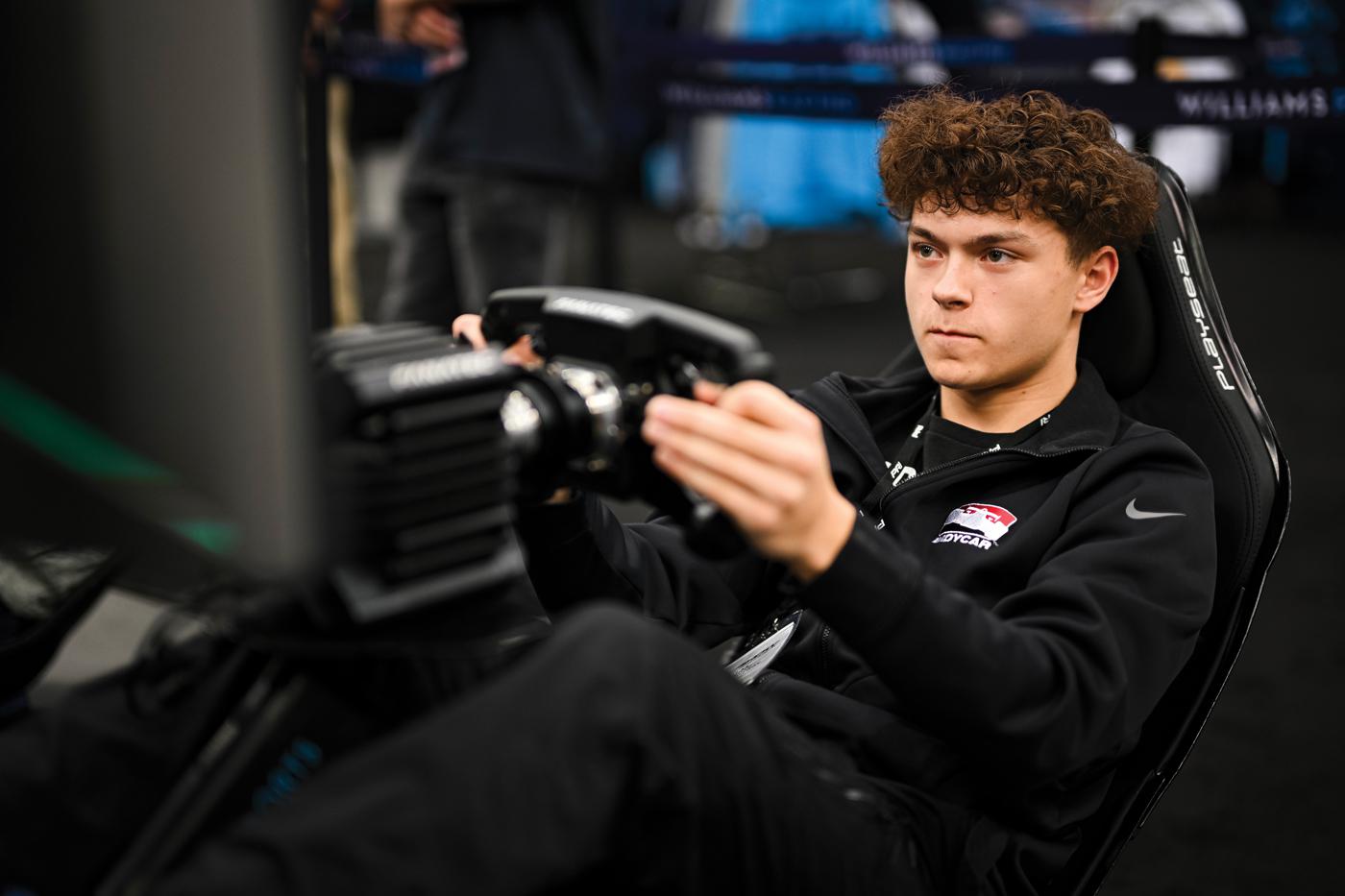
Student attendance at the PRI Show is growing—and that’s a good thing.
It’s long been said the PRI Show is about the business of racing. Yet there’s another element of the Show that is receiving renewed attention: encouraging the involvement of high school and college students who are interested in a motorsports career.
The reason is simple. As Michael Conley, PRI’s customer care specialist, succinctly put it: “Students are our future, the future of racing.”
Jose Escobar, SEMA’s manager of recognition programs, agreed. “Kids are our future. The industry needs to keep living and growing. Twenty years from now, the kids who came to the Show will be the ones exhibiting. They’ll be the ones we’re bringing into the professional world.”
Conley, Escobar, and other members of the PRI and SEMA staffs, along with educators and others affiliated with student groups, are working on programs and incentives to not only get students through the doors of the Indiana Convention Center (ICC) and Lucas Oil Stadium, but also provide added value to their PRI Show experience. The benefits to those students, Escobar said, “are endless.”
Student Membership
Those who want to attend the PRI Show must be a PRI Member. To qualify for membership, “you must be involved in the racing industry in some capacity—own a shop or be an employee at a shop, own a race team or be a part of a race team, or be a manufacturer for the racing industry,” Conley said.
Several years ago, acquiring that membership was made easier for students by introducing a Student membership for $20, half the cost of the Pro membership.
“The Student membership is essentially the exact same as the Pro level,” Conley explained. “It’s just discounted to a rate that helps students attend the Show on a college or high school budget. They get the exact same membership benefits that they would as a Pro member.”
To qualify for Student membership, the student must be 16 years or older and enrolled in an automotive performance-oriented curriculum. Students must also have an email address that ends with the “.edu” domain name. PRI can verify the student’s status in other ways, Conley said, which is helpful for those high school students who don’t have an email address affiliated with their school.
Access to the Show and all the events associated with it (more on that below) is the biggest draw for students, but there are benefits to membership beyond the ICC, Conley added. “A lot of performance retailers offer discounts that students can use on a personal vehicle.” Those discounts aren’t just on parts. Pit Weld U, for example, offers student members a “trial course for a welding seminar and a discount on welding workshops.”
Personal Impact
The Student membership level had a soft launch in 2021. At that year’s PRI Show, approximately 400 student members signed up, Conley said, a majority of whom came from the University of Northwestern Ohio (UNOH) in Lima, Ohio.
Trey Becker, a UNOH alum who is now vice president of business development, remembered “sitting down with a couple of my close friends from PRI at the SEMA Show a few years ago, and that’s where we hatched the idea of a Student membership. It’s a passion project for me, because I understand how much PRI did for my career, and how much PRI has done for me personally.”
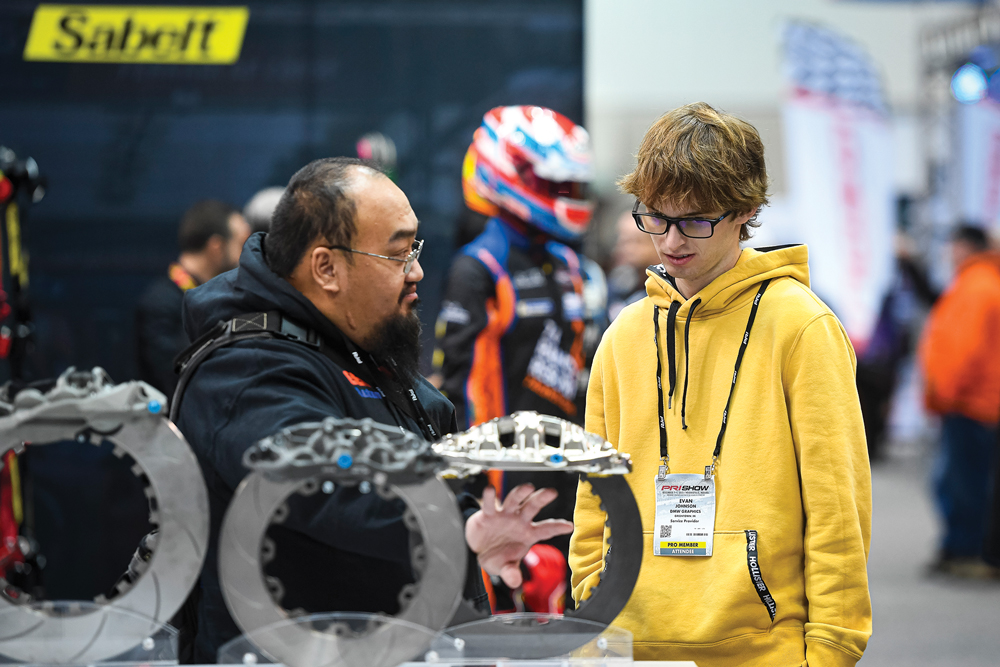
Becker said it was “amazing to see the energy behind it from the industry, and then to see the eagerness and excitement of the students signing up. When I got the report from the membership team that we had more than 300 students attend, I was just blown away.”
“Last year, at the end of the Show, we saw an increase up to roughly 800-plus student members,” Conley said. “So we doubled Student membership. We’re hoping to project on that same path moving into this year.”
At UNOH, PRI membership and attendance at the Show is voluntary, Becker said, but he encourages his students to sign up. “I want to make sure they understand, not only do you have a chance to sign up to be a year-long member of the performance racing industry, but you also have a chance to attend the largest racing trade show in the world and get to interact with the exact brands and movers and makers and faces that you’ve been looking up to your entire life. Before you know it, you’re going to be one of those faces on the Show floor that other people are looking up to.”
The Show Experience
Attending the PRI Show has multiple layers of benefits for students interested in motorsports.
“The most common feedback I get from students is that they had no idea how big our industry was and how many different avenues you could take in it,” said Becker. “It’s easy for them to get overwhelmed by the thousands of companies, all the different products and new releases, and all the things that are going on. But for students to pause, take all that in, and understand that they’ve aligned with a career path that has an infinite amount of opportunities that are all passion-driven, that’s incredible.”
At the PRI Show, “students get to see many different types of real-life opportunities and jobs that they would want to take on. They actually get to see a career path,” said Jerry Yang of Jerry Yang Racing, a professional drift team that also operates a race car fabrication shop in Atlanta, Georgia.
For the students who attend the Show from the School of Automotive Machinists & Technology (SAM Tech) in Houston, Texas, the PRI Show “serves as kind of a job fair,” said Brian Massingill. “Our students wear their SAM Tech shirts, and as they’re walking down the aisles people say, ‘Hey, I need you to come work for me.’ If you’re a SAM Tech student, that will open many doors.
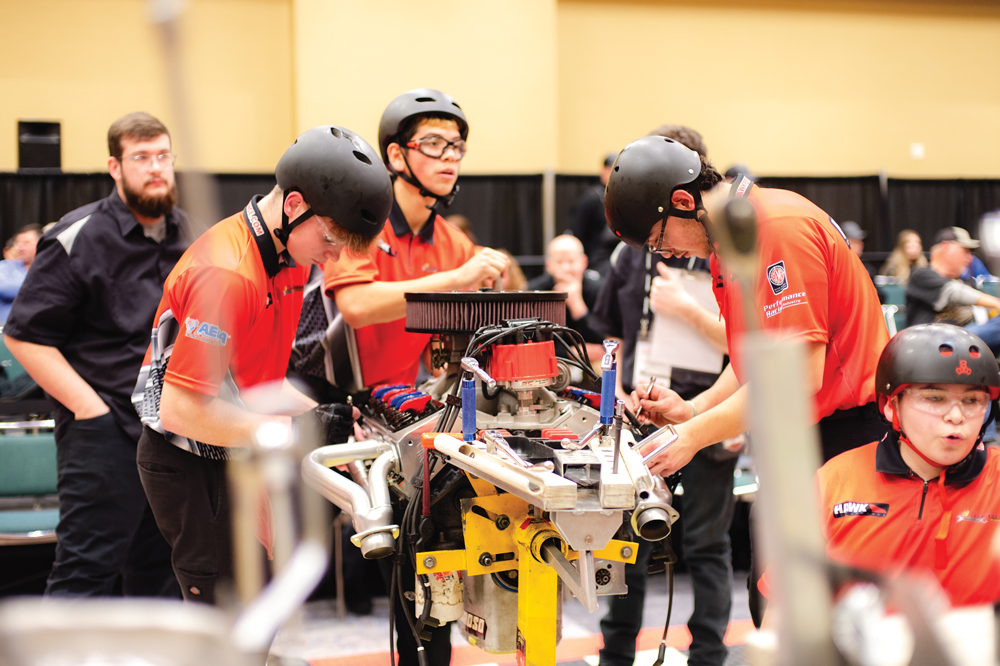
“The PRI Show has been great for our students,” Massingill added. “They really get to see and talk to a lot of industry leaders about what they’re planning for next year, what they’re going to roll out. Our students are having one-on-one conversations with people that they’re not going to be able to get on the phone.”
The Benefits of Networking
Massingill’s point about one-on-one conversations was echoed by a number of our other sources.
“The students can talk to marketing people, owners, people involved in all aspects of racing,” said Yang. “They’re talking to the industry leaders of where they want to be, and I think they draw a lot of inspiration from people who have done what they’re looking to do.”
“Students may understand the engineering on their car, but they may not understand the business of the sport,” said Dean Case, who works with the 18 student groups affiliated with the SAE’s Southern California section. “You go to events like the PRI Show because that’s where the business is discussed. You’re going to meet people at the PRI Show that you’d never meet at a race track. And you get to have those conversations without having to shout over all the engines.”
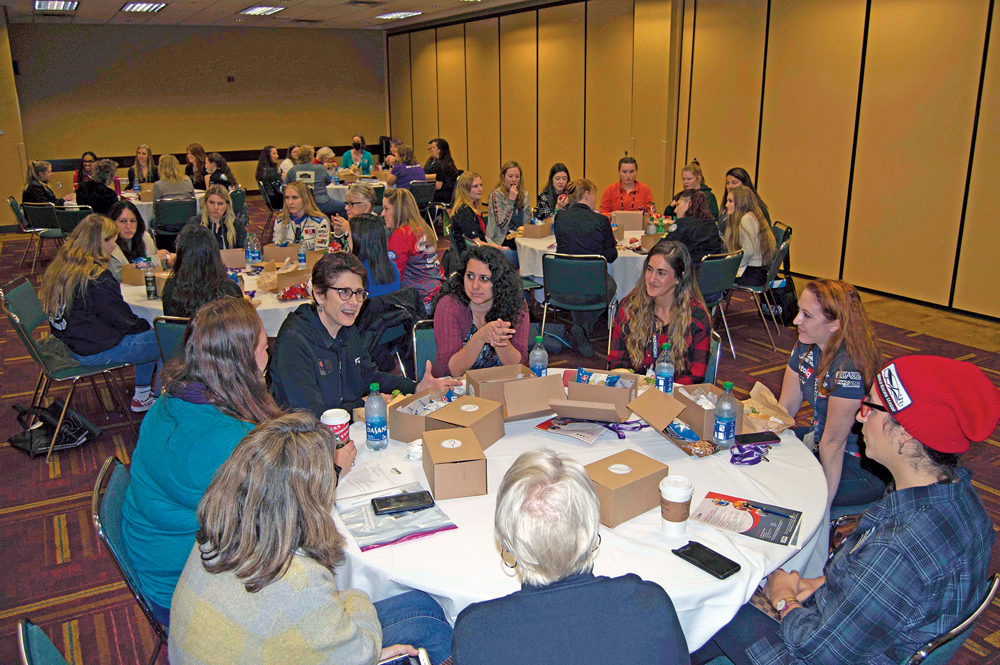
“Our students love to attend the different networking sessions, whether it’s the Grand Opening Breakfast or the different breakout groups that happen through some of the organizations during the week,” Becker said. “A lot of them also really enjoy the education seminars, being able to learn from current industry professionals about a topic that they know inside and out.”
Becker worked with the PRI staff last year to “volunteer our students to help scan people into those sessions,” and “all who were involved absolutely enjoyed it,” he said. “They got to sit in on the classes they were involved with, and they got to interact with the makers and movers of our industry as people were coming to those sessions. You should have heard the excitement in their voices when they said, ‘I got to meet this drag racer, or this drifter, or this guy from this company I’ve been looking up to my whole life.’ Where else can you do that besides PRI?”
Student Programs
To facilitate networking, PRI has set up events at the Show specifically for students. One is the aptly named PRI Student Program Industry Networking Breakfast, to be held Friday, December 13 from 7:45–9 a.m. in Sagamore Ballroom 6 and 7. “Students interested in the automotive industry can network with companies, potential employers, or just people that they’re interested in to learn more about potential career options,” Escobar said. “For the older students who may be close to graduating, they can get information about job openings that may be available at these companies. It’s a really good opportunity for students to get a behind-the-scenes look at potential careers they’re exploring after they’re done with school.”
Escobar said the Breakfast currently draws between 200–300 students, and he would like to see that number grow. “We are encouraging instructors to bring out their entire class. It’s a pretty big thing.”
Another networking opportunity, for women only, is the Gear Up Girl Lunch, put on by the SEMA Businesswomen’s Network (SBN). This event takes place on Friday, December 13, from 11:45 a.m. to 1 p.m. in Meeting Room 208.
“The Gear Up Girl Lunch is designed for students and women new to the industry to talk to women already in the industry, creating a network for women to connect,” said Nicole Bradle, SBN Council Director.
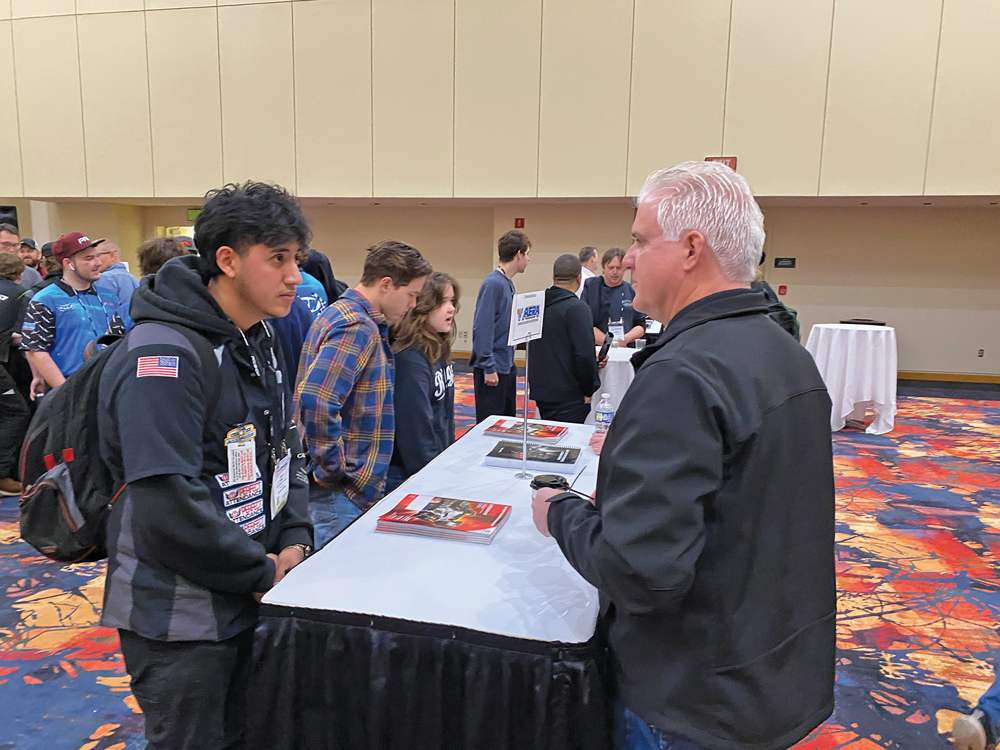
“It’s a speed networking event,” Bradle explained, “designed to give attendees the opportunity to meet many different women.” Following lunch, “half of the attendees get up and move to the next table. They go round-robin, so they have the chance to meet, at least, half of the room.” Facilitating the networking experience is a list of questions already on the table for attendees to answer.
“The structured networking makes it easier for the students to connect with other women,” Bradle said. “They don’t have to ask the questions. They can just connect and start talking.”
Not all the questions are performance-related, by design. “They might find out about mentors, or about how these women got into the industry,” Bradle said. “They also learn about career pathways and other professional findings, to help make other connections. Some women are passionate about the industry, and some are in the industry, but aren’t necessarily car racing enthusiasts. That’s why there’s a variety of questions.”
The Hot Rodders of Tomorrow National Competition that takes place at the PRI Show is not about networking, at least on the face of it, but it is a way for high school students “to get access to this industry,” Massingill said. The four-day event involves student teams from around the country tearing down and rebuilding engines in timed competition.
For more than a decade, SAM Tech has offered scholarships of up to $10,000 for the competition winners, but all the teams that make it to PRI leave with something, Massingill said. “We do this to help ease the financial burden for these students who show they have a real passion for the performance industry. These are the kids who aren’t necessarily going to play football or join the orchestra after graduating high school. They want to use their hands-on skills to find a lifelong career. By opening up the Show to them, they can come and ask intelligent questions and get intelligent answers. They can see that there are some great careers available here, and that will drive them to a school like SAM Tech that can train them to get out there.
“One of the big things that we have to do is show young people, yes, you have to work,” he added. “But there is so much money to be made in our industry. And look at all the fun you get to have.”
Focus on the Future
From Massingill’s perspective, there is a “massive need” for new, technically skilled employees in the automotive industry and beyond. “There’s more work to be done, and seemingly fewer people. It’s not just NASCAR, it’s Monster Jam, SpaceX, Boeing, Blue Origin, all these companies need help with everything. Our CNC, our block, our cylinder head, and our EFI graduates are getting hired all across the world. We have more employers than we do graduates, and the number of jobs that needs filling is higher than we’ve ever seen. If we can close that up, we can start fixing a lot of problems. I think that starts at PRI.”
The PRI staff is keenly aware of that role, and the organization’s student programs are about to get more attention.
“We have a new president in the office, Michael Good, who is very high on the future of the racing industry, and he knows that starts with our college and high school programs and institutions,” Conley said.
Good, who joined PRI as president earlier this year, believes that “the students of today are the future employees of the companies that are associated with PRI tomorrow. We need to continually invest in these students and introduce them to the innovations of our industry, where the industry is, and where the industry is going.”
“I think students should be excited for what is to come,” Conley added. “There are a lot of changes that will be taking place, all for the better, going into the 2025 Show. So it’s only up from here. It’s a really good time for a student to be getting into PRI, because they’re the future, and we know that.”
“I encourage every other school out there to get involved,” Becker said. “Whether they send three students or 30 students or 300 students, they’re all going to have an incredible time at the PRI Show.”
SOURCES
Hot Rodders of Tomorrow
hotroddersoftomorrow.com
PRI
performanceracing.com
SAE SoCal
saesocal.org
School of Automotive Machinists & Technology (SAM Tech)
samtech.edu
SEMA
sema.org
University of Northwestern Ohio (UNOH)
unoh.edu
Jerry Yang Racing
jerryyangracing.com
 MEMBERSHIP LOGIN
MEMBERSHIP LOGIN JOIN PRI
JOIN PRI


